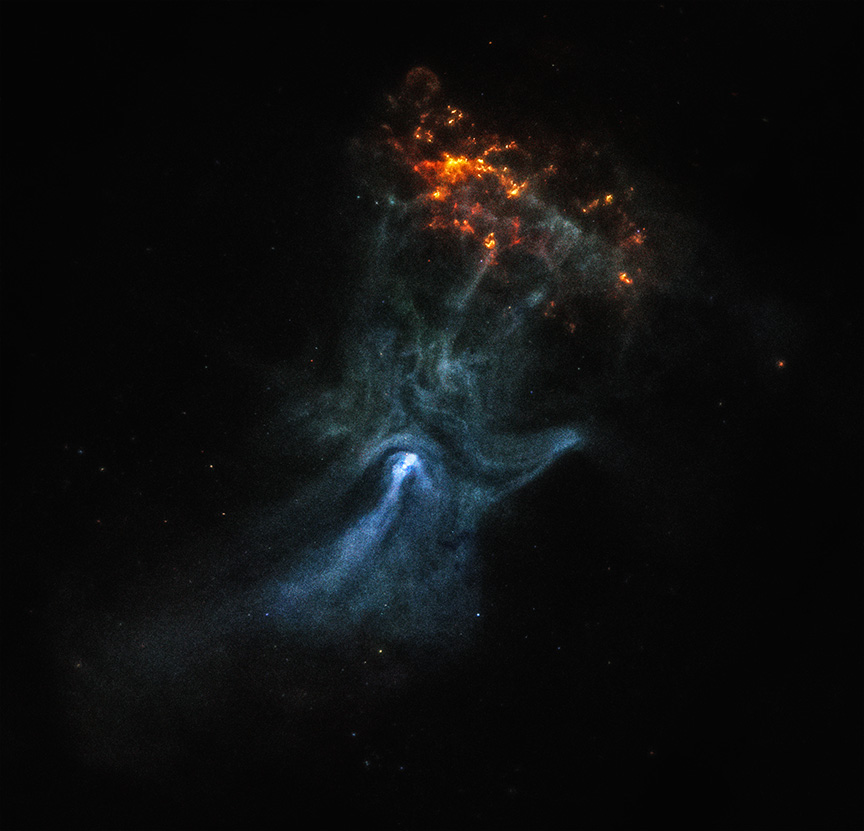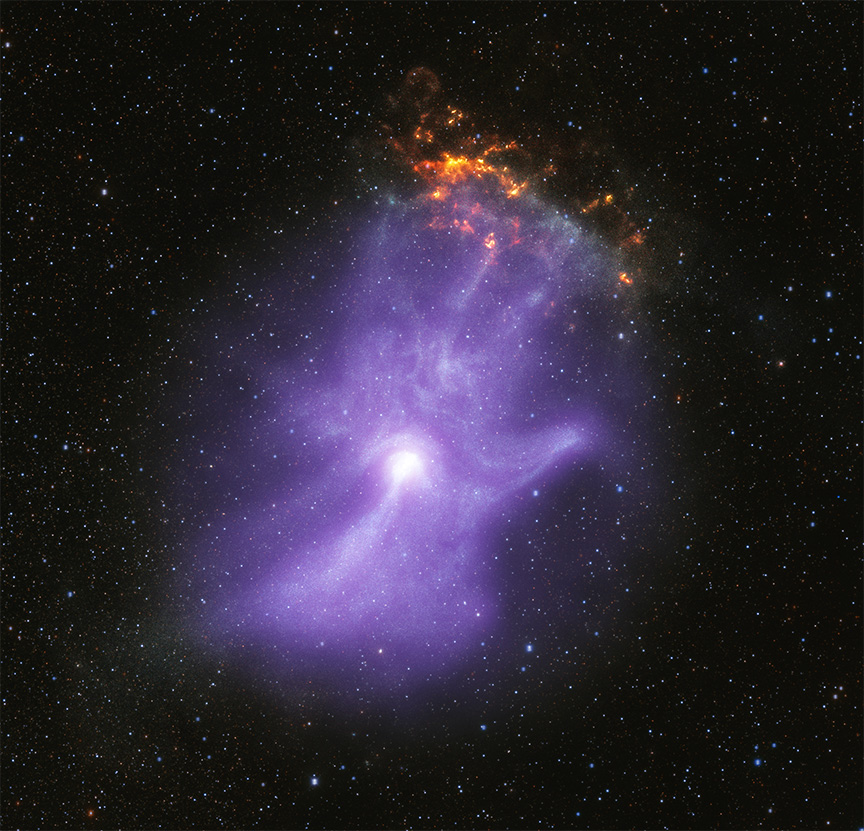NASA published a new image of the pulsar nebula MSH 15-52. The bizarre formation resembles a giant ghostly hand.
Explosion from the past
1500 years ago, one of the massive stars in our galaxy ran out of nuclear fuel. It collapsed, ending its existence with a supernova explosion. The result of this event was the formation of an ultra-compact object, a rapidly rotating neutron star with a very strong magnetic field. Such objects are called pulsars.

In fact, pulsars are natural laboratories of extreme physics with conditions that cannot be reproduced on Earth. Young pulsars can create jets of matter and antimatter ejected from their poles, as well as intense “wind,” forming so-called pulsar nebulae. In 2001, the Chandra X-ray Observatory first observed a pulsar formed as a result of the death of a star, as well as the surrounding nebula MSH 15–52. They are 16,000 light-years away from Earth. It turns out that the nebula has a very unusual shape, resembling a hand. The pulsar is located at the base of its “palm”.
Structure of the ghost hand
Two decades later, NASA decided to return to this object and make new observations of both the pulsar and the nebula. The recently launched IXPE X-ray telescope was used for this.

In total, IXPE had been studying the ghost hand for 17 days. This is its longest period of observation of an individual object since the start of work. Analysis of the data collected by the telescope gave astronomers the opportunity to create the first map of the magnetic fields of MSH 15–52. According to the researchers, charged particles move along the lines of force, determining the basic shape of the nebula, similar to the location of bones in a human hand.
IXPE also presented data on the polarization of X-ray radiation, which turned out to be strikingly large, reaching the maximum level expected from theoretical work. To achieve such a force, the magnetic field must be very straight and uniform. This means that there is practically no turbulence in the pulsar wind forming the nebula.
A particularly interesting feature of MSH 15-52 is the bright X-ray jet directed from the pulsar to the “wrist” at the bottom of the image. The new IXPE data show that the polarization at the beginning of the jet is low, probably because it is a turbulent region with complex, entangled magnetic fields associated with the generation of high-energy particles. By the end of the jet, the magnetic field lines straighten and become more uniform, which leads to an increase in polarization.
These results indicate that the particles receive an energy pulse in complex turbulent regions near the pulsar at the base of the “palm” and flow into the regions of a uniform magnetic field along the “wrist” and “fingers”. IXPE also found a similar structure of magnetic fields in the Crab Nebula and Vela Pulsar, which suggests that it is typical for similar objects.
According to https://www.nasa.gov
Follow us on Twitter to get the most interesting space news in time
https://twitter.com/ust_magazine
